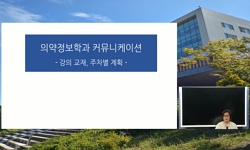Korean Oriental medicine has unequal access to some linguistic resources that it shares with biomedicine under the dual medical system despite their comparable legal positions. At the societal level, their asymmetric linguistic hegemonies are encapsul...
http://chineseinput.net/에서 pinyin(병음)방식으로 중국어를 변환할 수 있습니다.
변환된 중국어를 복사하여 사용하시면 됩니다.
- 中文 을 입력하시려면 zhongwen을 입력하시고 space를누르시면됩니다.
- 北京 을 입력하시려면 beijing을 입력하시고 space를 누르시면 됩니다.
https://www.riss.kr/link?id=A103653052
- 저자
- 발행기관
- 학술지명
- 권호사항
-
발행연도
2015
-
작성언어
-
- 주제어
-
KDC
740
-
등재정보
KCI등재
-
자료형태
학술저널
-
수록면
67-94(28쪽)
- DOI식별코드
- 제공처
- 소장기관
-
0
상세조회 -
0
다운로드
부가정보
다국어 초록 (Multilingual Abstract)
Korean Oriental medicine has unequal access to some linguistic resources that it shares with biomedicine under the dual medical system despite their comparable legal positions. At the societal level, their asymmetric linguistic hegemonies are encapsulated in, and perpetuated by the Medical Law of Korea (e.g., Ch. 1, Article 2), which consistently marks the former with han- ‘Korean’, while unmarking the latter. However, there has been little empirical research that examines the unmarking norms in unfolding discourse. Noting the paucity, the present study investigates whether or not the societal marking norms persist at a situational level, particularly in unfolding Oriental medical interactions, and if so, in what forms. To do so, it qualitatively analyzes a data set of 15-hour-long naturally-occurring consultations between Oriental doctors and their patients. It evidences the consistency of the unmarking norms at the situational level and demonstrates that the first-mention references point to biomedical entities even within an Oriental interaction despite the absence of any linguistic markings that favor biomedicine. Thus, potentially ambiguous unmarked first-mentions such as uysa (sensayngnim) doctor, pyengwen hospital/clinic, yak drug, and uyhak medical science are macrolinguistically disambiguated. Consequently, they discursively materialize the macrolinguistic hegemony that biomedicine holds under the dual medical authority. The very fact that such one-way intertextual references pervade even unfolding Oriental discourse with little confusion and resistance is symbolic of biomedical dominance and power asymmetry between the two medicines.
목차 (Table of Contents)
- 1. Introduction
- 2. Previous Studies of Medical Discourse
- 3. The Data
- 4. Examples and Analyses
- 5. Conclusion and Limitations
- 1. Introduction
- 2. Previous Studies of Medical Discourse
- 3. The Data
- 4. Examples and Analyses
- 5. Conclusion and Limitations
- References
동일학술지(권/호) 다른 논문
-
A Statistical Modeling of Syntactic Island Effects Based on Acceptability Ratings
- 현대문법학회
- Eu hee Kim
- 2015
- KCI등재
-
An Experimental Syntactic Study of Binding Domain and VP-Ellipsis in Korean
- 현대문법학회
- Ji Hye Kim
- 2015
- KCI등재
-
- 현대문법학회
- 엄홍준(Hong Joon Um)
- 2015
- KCI등재
-
SNS 모바일 텍스트의 언어학적 양상 : 성별과 연령의 차이를 중심으로
- 현대문법학회
- 박선우(Sun woo Park)
- 2015
- KCI등재





 스콜라
스콜라







